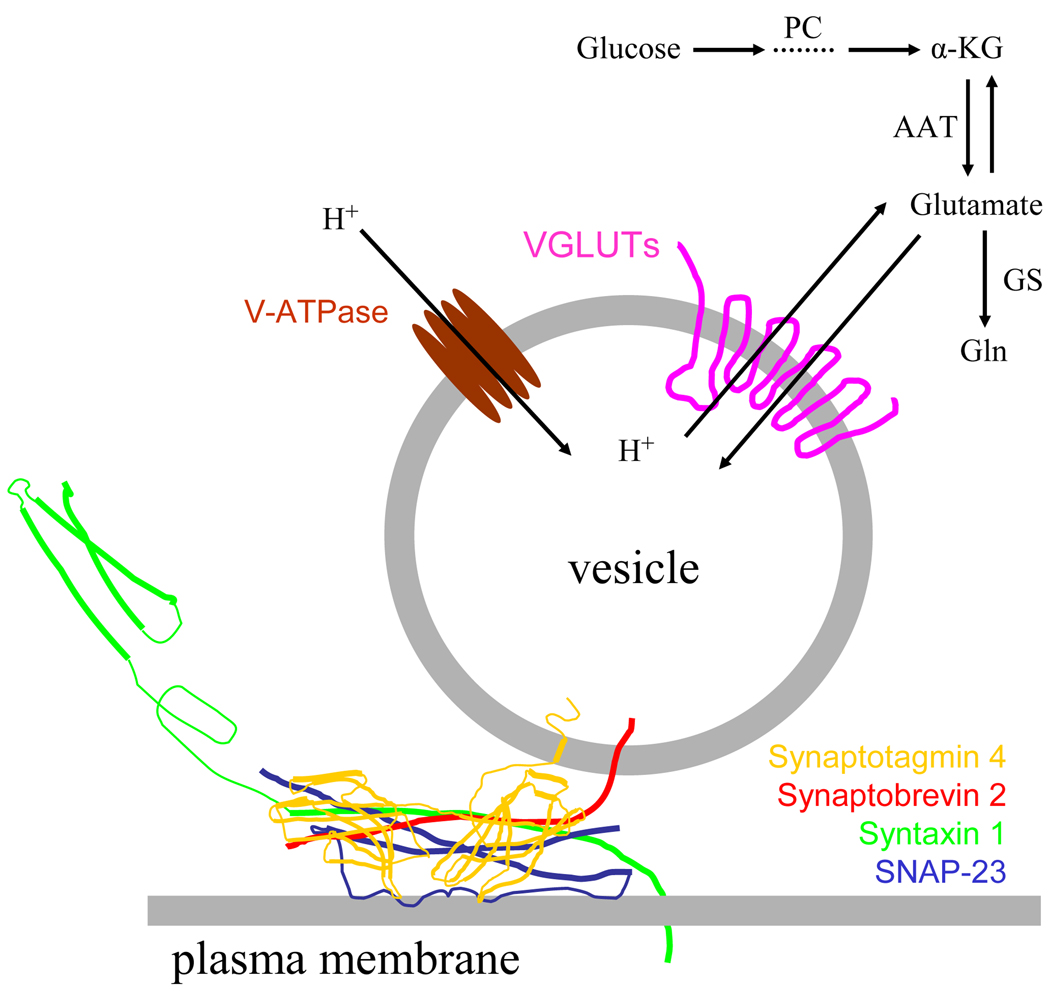Figure 1.
Glutamate release by Ca2+-dependent exocytosis. Glutamate packaged in vesicles is released from the astrocyte when the vesicle fuses with the plasma membrane. This fusion process is mediated by synaptotagmin 4 and SNARE proteins: syntaxin 1, synaptobrevin 2 and synaptosome-associated protein of 23 kDa (SNAP-23). Glutamate can be synthesized in astrocytes de novo from glucose entry to the tricarboxylic acid cycle via pyruvate carboxylase (PC). Glutamate is converted from the cycle intermediate, α-ketoglutarate (α-KG), usually by transamination of aspartate via aspartate amino transferase (AAT). The synthesized glutamate once in the cytosol can then be converted to glutamine (Gln) by glutamine synthetase (GS), or transported into vesicles via proton-dependent vesicular glutamate transporters (VGLUTs), especially isoform 3. The proton gradient is generated by vacuolar type H+-ATPases (V-ATPase).

